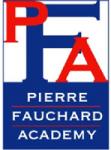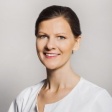Faculty of Dentistry
Study modern and professional study programmes recognised in the European Union and become a highly qualified dentist!
The faculty prepares highly-qualified dentists, with the knowledge and practical skills required in order to practise in general dentistry – treat patients with oral and dental diseases, educate the public on the prevention of these diseases. If secondary vocational education has been previously obtained in dentistry or nursing studies, it is possible to obtain the qualification of a dental hygienist over two years.
Dean
Academic Staff, Department of Conservative Dentistry and Oral Health
Director of Study Programme, Dentistry (LV)
Manager, Dean's Office
Studies
The goal of the dentistry study programme implemented in the faculty is to prepare qualified dentists with sufficient knowledge and practical skills to start practising general dentistry – treat patients with oral and dental diseases, as well as the running of practical activities to educate the community in the prevention of the aforementioned diseases. The clinical base for the acquisition of speciality dentistry disciplines is the Institute of Dentistry which is an internationally recognised high-quality centre of practical dentistry in Latvia. It is located in Riga, 20 Dzirciema Street near the RSU central building. The Academic School of Dental Hygiene and Latvian Association of Dentistry Students are located in the Faculty.
The professional training of students takes place in five structural units of the Faculty of Dentistry:
- Department of Maxillofacial Surgery;
- Department of Orthodontics;
- Department of Oral Medicine;
- Department of Conservative Dentistry and Oral Health;
- Department of Prosthetic Dentistry.
Several members of the teaching staff of the faculty are the members of the prestigious Pierre Fauchard Academy honorary dental organisation.
Study programmes
Dentistry – Dentist’s qualification
The Faculty of Dentistry is one of the oldest RSU faculties, – with working principles that were already established during the first period of Latvian independence.
History
The Faculty of Dentistry is one of the oldest faculties at RSU - its operating principles date back to the first period of Latvian independence.
- 1919–1949
The beginnings of the Faculty of Dentistry date as far back as 1921, when the Dentistry Department was opened with 18 students at the Faculty of Medicine of the University of Latvia (UL) based on a proposal from the Latvian Dental Association. Kārlis Barons (1865–1944), then assistant professor and later professor, became the first head of the department. We consider this year to be the year that the faculty was founded, even if it only became an independent faculty in 1950.
In 1922, the Dentistry Department was given premises at 9 Stabu iela with the support of Aleksandrs Dauge, the Minister of Education at the time. The premises were equipped and named the Institute of Dentistry of the University of Latvia
In 1923, Late Veibele-Jakovļeva, the first female dentist, became Prof. Kārlis Barons’ assistant. She worked in the Dentistry Department of the UL Faculty of Medicine up until 1934.
In 1925, Dr. Med. dent. Ādams Ērlains came to work at UL from Heidelberg University in Germany. Dominiks Kalvelis, the future professor and Dean of the Faculty of Dentistry, was a student of his. The first three years of studies were devoted to theoretical courses, work with artificial models, and assisting final-year students. Senior students had to learn how to admit patients correctly, how to handle instruments, medicinal products, take specimens for tests, make a diagnosis and perform surgeries safely, skilfully and carefully. Before the national examinations, each student had to present a thesis. 30–50 students enrolled into the UL Dentistry Department. 334 students graduated until World War II. In 1938, there were 837 dentists in Latvia, in 1945 — only 178.- 1950–1989
In 1950, the Council of Ministers of the USSR decided to separate the Faculty of Medicine from the Latvian State University (LSU) and establish Riga Medical Institute (RMI) that can be regarded as the direct predecessor to RSU. The LSU Dentistry Department was renamed the RMI Faculty of Stomatology. In 1944, after the tragic death of Prof. Kārlis Barons (1920-1944), the first Dean of the Dentistry Department, Prof. Domeniks Kalvelis, had restored the teaching of dentistry and passed on the European traditions of the medical intelligentsia of pre-war Latvia. After the Faculty of Stomatology was founded, he agreed to be Dean (1944–1966).
The faculty had three departments: Therapeutic Stomatology, Surgical Stomatology, and Orthopaedic Stomatology. The faculty was named the Faculty of Stomatology for two reasons: firstly, the field was considerably wider than just dental treatment, it included the prevention and treatment of oral and maxillofacial disorders, secondly, the School of Dentists also existed in Riga at that time. The Institute of Dentistry on Stabu iela was transformed into the United Stomatology Polyclinic of the Republic, which continued to be a clinical training centre for students.
Studies at the Faculty of Stomatology were five years long. Each year, 25 Latvian and 25 Russian students were enrolled. During the first two years, stomatology students studied together with students from the Faculty of Medicine, but starting from the third year, studies were organised in three profiling departments related to stomatology. The unified curriculum had to be followed with a significant reduction in training in specialised dental disciplines and an increase in the proportion of general medical education and ideological courses, something characteristic for the USSR. The proportion of courses specifically related to stomatology was just under 40% of the entire study programme. Upon graduation from the faculty, students were issued a diploma with a “doctor-dentist” qualification.
In 1966, Prof. Indulis Bākulis was appointed Dean of the Faculty; he was also the Head of the Department of Surgical Stomatology. He remained the Dean of the Faculty until 1976, and was respected and loved by colleagues and students.
In 1968, the building on 20 Dzirciema iela was built for the faculty and equipped with modern equipment. Student research interest groups began working at each of the stomatology departments.
From 1976 to 1993, Prof. Gunārs Pakalns was the Dean of the Faculty of Stomatology. At the beginning of the 1990s, changes began in education in the field of stomatology; the teaching staff prepared programmes based on the teaching criteria of higher education institutions in European Union countries. Studies were still five years long.
- 1990–2000
From the 1991/’92 academic year onwards, only 40 students were admitted without any division by language of instruction. The first international students were enrolled in 1990. The students who enrolled in the 1993/’94 academic year were taught according to an internationally recognised curriculum.
From 1993 to 1994, Assoc. Prof. Egils Korņevs was the Dean of the Faculty. Prof. Ilga Urtāne continued this work until 1999.
In 1994, cooperation with the Faculty of Dentistry of the Karolinska Institute in Sweden, the University of Oslo and the University of Wales was initiated to develop new study programmes and for teachers to gain experience. The number of hours in the specialised stomatology study courses was increased, several new study courses were introduced. Study courses related to dentistry already constituted 60% of all study courses.
On 1 July 1994, the Institute of Stomatology was also restored as a structural unit of the Medical Academy of Latvia.
In 1995, the School of Dental Hygienists was founded. The school was operational until 2003 and was restored again in 2007. Assoc. Prof. Egita Senakola became the Head of the school.
In 1995, the first international students graduated from RSU Faculty of Stomatology.
From 1994, graduates' diplomas contained the phrase “obtained a stomatology degree”, but since 1997 — “obtained a degree of doctor of dental surgery”. Prof. Ilze Akota was the Dean of the Faculty of Stomatology from 1999 to 2003.
In 1999, the research interest group for dentistry students was restored. Since 2000, one student from the Faculty of Stomatology presents the results of their independent research each year at an international student conference organised by Dentsply in Copenhagen as part of the Congress of Scandinavian Dentists.
In 2000, the study programme was evaluated by international experts selected by the Association of Dental Education in Europe (ADEE), who highlighted achievements and commented on necessary changes.
- 2001–2024
In 2001, the University and the Faculty became a member of the Association of Dental Education in Europe (ADEE). The Faculty is involved in EU-funded projects to further develop and possibly convert dental education in Europe - DentEd and DentEdEvolves.
From 2003 to the end of 2013, Prof. Ingrīda Čēma was the Dean of the Faculty.
Since 2005, students at the Faculty have had the ability to participate in ERASMUS exchange programmes furthering their education at higher education institutions throughout Europe.
In 2007, the Association of Dentistry Students of Latvia was founded for the first time in the Faculty’s history.
Since January 2009, the Faculty has started a new tradition borrowed from American universities — the White Coat Ceremony. This ceremony symbolises third-year students’ transition from pre-clinical training to practical work with patients in the clinic.
In May 2010, another tradition was established — an event at which students’ scientific research and best literature reviews is presented, organised by the student research interest group at the Faculty.
At the beginning of 2015, the Faculty of Stomatology was renamed the Faculty of Dentistry.
From 2014 to 2018, Prof. Ilga Urtane was the Dean of the Faculty, but from 2019 to 2024 — Assoc. Prof. Andris Ābeltiņš. On 11 March 2024, Assoc. Prof. Laura Neimane was approved as the Dean of the Faculty.
Research
Baltic Biomaterials Centre of Excellence
RSU to Research How Medications Can Be Incorporated Into Implantable Biomaterials
Latvian Section of the European Region of the Pierre Fauchard Academy
The Pierre Fauchard Academy (PFA) is an international honorary dental organisation which was founded by Minneapolis dentist Elmer S. Best in 1936. The organisation was established in order to increase the standards of the dental profession and support the acquisition of new knowledge by separating scientific articles from commercial interests. The Constitution of the Academy has also been drafted to implement the goals of S. Best.

Upon founding the Academy, S. Best and his colleagues named it after Pierre Fauchard. This Parisian dentist dedicated his life to both practical dentistry and scientific works and in 1728 he published his first scientific book about dentistry Le Chirurgien Dentiste au Traite des Dents.
The Academy also continues its work in the XXI century, the foundation established by the Academy awards dentistry professionals who have made significant scientific discoveries, supports dentistry students, awards grants for projects related to public health promotion all over the world.
PFA operates in all continents. During the 33rd International Dentistry Exhibition in 2009 the 1st European PFA Oral Health Promotion Conference was held, with representatives of Latvia also invited. It was then decided to establish a new section in the European region – a Latvian section. The PFA Latvian Section of the European Region is currently managed by Dr. Ilze Maldupa with 14 members. Joining the PFA provides opportunities in Latvia to obtain financial resources for the support and progress of the operation of oral health centres, as well as for the support of oral health promotion projects. Furthermore, Latvian dentists have an opportunity to participate in different international health promotion projects, for example, in the prevention of noma disease in Africa.
PFA contact person
Lead Researcher, Department of Conservative Dentistry and Oral Health
Documents
Faculty of Dentistry
F 10:30–12:00, 13:00–15:30
Related events
Related news
 Speed Friending for RSU local and international students: A fun way to make new connections and friendshipsFor Students
Speed Friending for RSU local and international students: A fun way to make new connections and friendshipsFor Students Join us for the Opening Plenary Session of RSU Research WeekFor Students, For RSU Employees, RSU Alumni, Conferences, workshops, Research, Traditional Events
Join us for the Opening Plenary Session of RSU Research WeekFor Students, For RSU Employees, RSU Alumni, Conferences, workshops, Research, Traditional Events From clinical simulations to discussions on lasting peace in Ukraine: RSU students invite you to the International Student ConferenceFor Students, Conferences, workshops, Research, Traditional Events
From clinical simulations to discussions on lasting peace in Ukraine: RSU students invite you to the International Student ConferenceFor Students, Conferences, workshops, Research, Traditional Events RSU inspires and encourages prospective students at Skola 2025 education fairRSU LSPA, For High School Students, For Teachers, Traditional Events
RSU inspires and encourages prospective students at Skola 2025 education fairRSU LSPA, For High School Students, For Teachers, Traditional Events RSU tenured professor from India: the microbiome is like a city inside the bodyResearchers Up Close, For Students, For RSU Employees, Development, Interviews, Research, International Cooperation
RSU tenured professor from India: the microbiome is like a city inside the bodyResearchers Up Close, For Students, For RSU Employees, Development, Interviews, Research, International Cooperation





